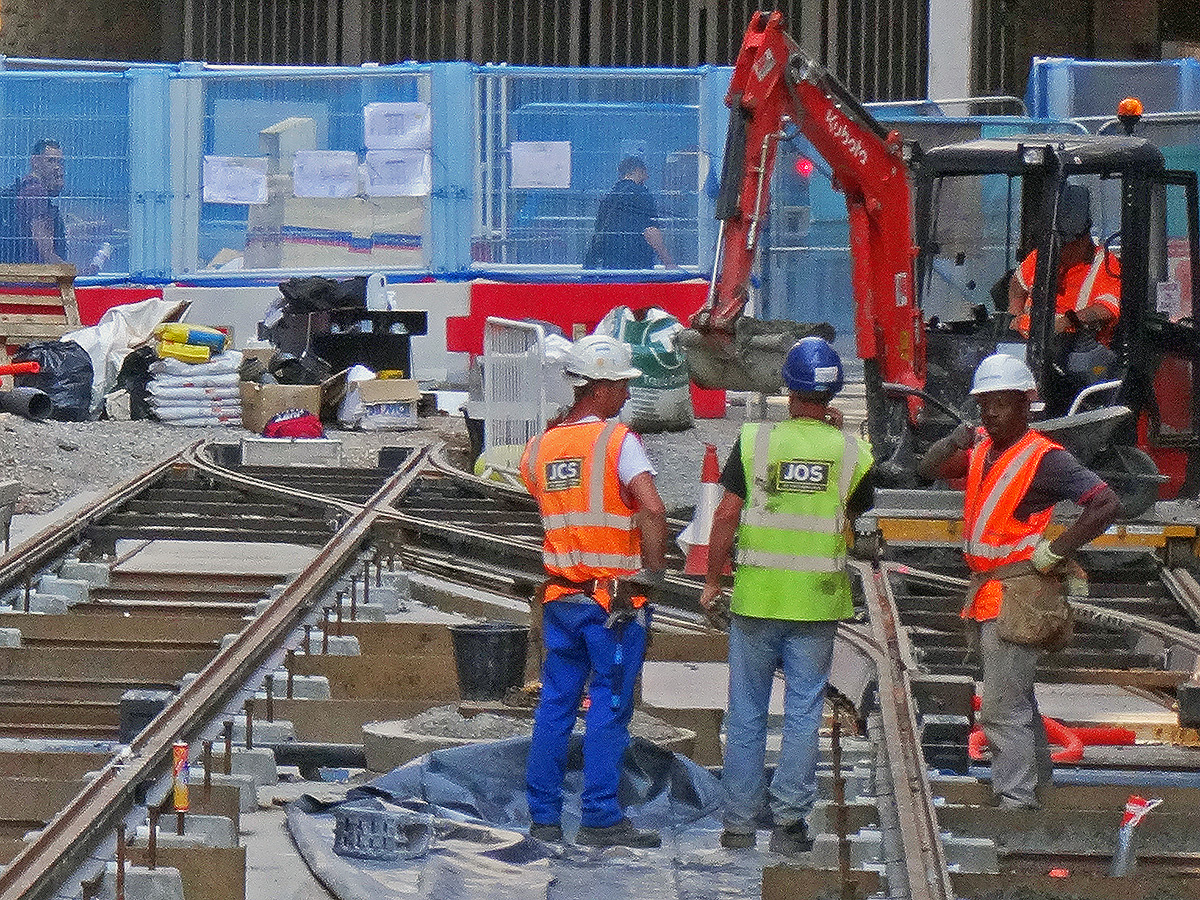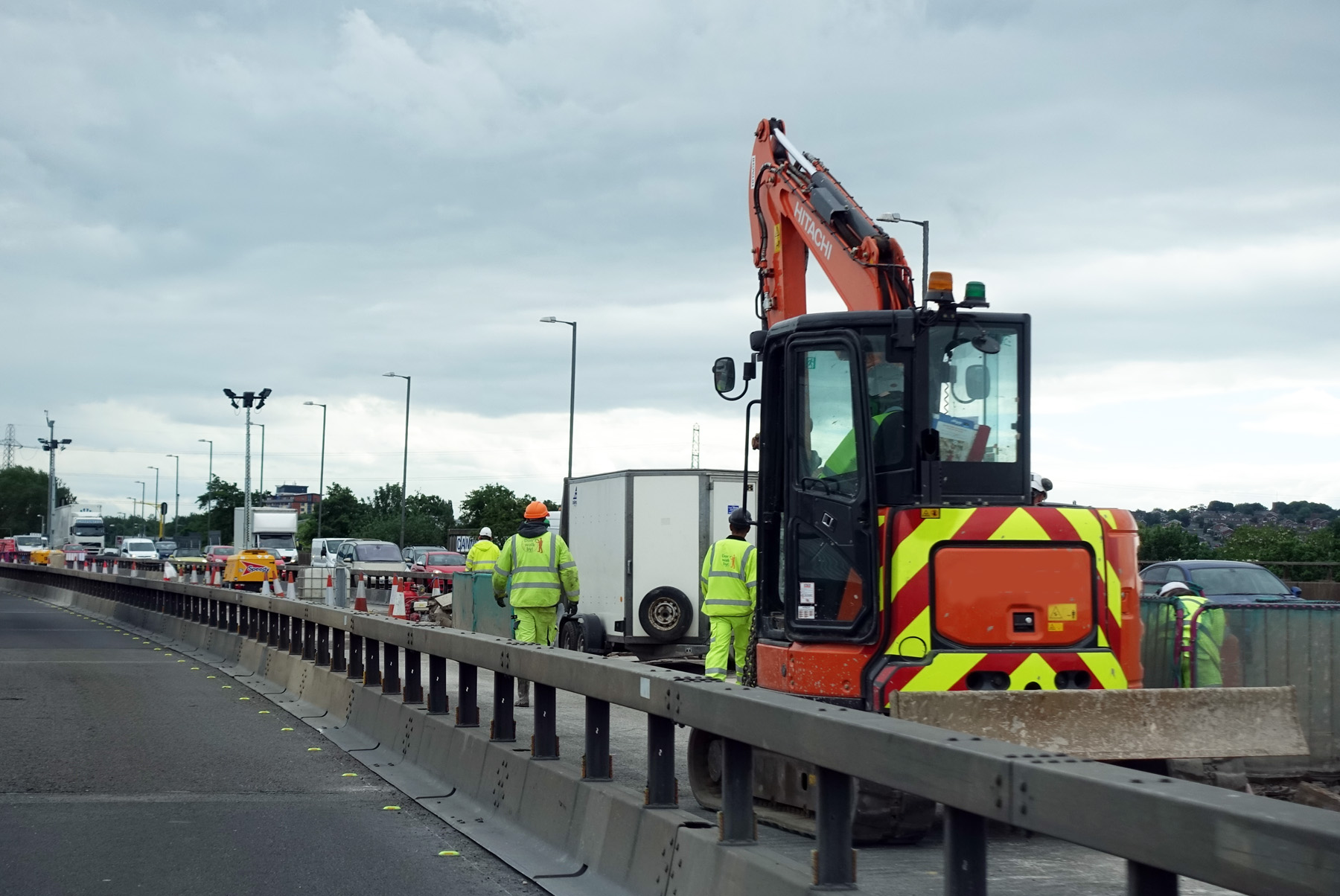A Keynesian route to recovery in output and employment?
 Boris Johnson gave a speech on 30 June outlining his government’s approach to recovery from the sharpest recession on record. With the slogan ‘Build, build, build’, he said that infrastructure projects were the key to stimulating the economy. Infrastructure spending is a classic Keynesian response to recession as it stimulates aggregate demand allowing slack to be taken up, while also boosting aggregate supply, thereby allowing recovery in output while increasing potential national income.
Boris Johnson gave a speech on 30 June outlining his government’s approach to recovery from the sharpest recession on record. With the slogan ‘Build, build, build’, he said that infrastructure projects were the key to stimulating the economy. Infrastructure spending is a classic Keynesian response to recession as it stimulates aggregate demand allowing slack to be taken up, while also boosting aggregate supply, thereby allowing recovery in output while increasing potential national income.
A new ‘New deal’
He likened his approach to that of President Franklin D Roosevelt’s New Deal. This was a huge stimulus between 1933 and 1939 in an attempt to lift the US economy out of the Great Depression. There was a massive programme of government spending on construction projects, such as hospitals, schools, roads, bridges and dams, including the Hoover Dam and completing the 113-mile Overseas Highway connecting mainland Florida to the Florida Keys. Altogether, there were 34 599 projects, many large-scale. In addition, support was provided for people on low incomes, the unemployed, the elderly and farmers. Money supply was expanded, made possible by leaving the Gold Standard in 1934.
 There was some debate as to whether the New Deal could be classed as ‘Keynesian’. Officially, the administration was concerned to achieve a balanced budget. However, it had a separate ’emergency budget’, from which New Deal spending was financed. According to estimates by the Federal Reserve Bank of St Louis, the total extra spending amounted to nearly 40% of US GDP as it was in 1929.
There was some debate as to whether the New Deal could be classed as ‘Keynesian’. Officially, the administration was concerned to achieve a balanced budget. However, it had a separate ’emergency budget’, from which New Deal spending was financed. According to estimates by the Federal Reserve Bank of St Louis, the total extra spending amounted to nearly 40% of US GDP as it was in 1929.
By comparison with the New Deal, the proposals of the Johnson government are extremely modest. Mostly it amounts to bringing forward spending already committed. The total of £5 billion is just 0.2% of current UK GDP.
Focusing on jobs
A recent report published by the Resolution Foundation, titled ‘The Full Monty‘, argues that as the Job Retention Scheme, under which people have been furloughed on 80% pay, is withdrawn, so unemployment is set to rise dramatically. The claimant count has already risen from 1.2m to 2.8m between March and May with the furlough scheme in place.
 Policy should thus focus on job creation, especially in those sectors likely to experience the largest rise in unemployment. Such sectors include non-food retail, hospitality (pubs, restaurants, hotels, etc.), public transport, the arts, entertainment and leisure and a range of industries servicing these sectors. What is more, many of the people working in these sectors are young and low paid. Many will find it difficult to move to jobs elsewhere – partly because of a lack of qualifications and partly because of a lack of alternative jobs. The rising unemployment will raise inequality.
Policy should thus focus on job creation, especially in those sectors likely to experience the largest rise in unemployment. Such sectors include non-food retail, hospitality (pubs, restaurants, hotels, etc.), public transport, the arts, entertainment and leisure and a range of industries servicing these sectors. What is more, many of the people working in these sectors are young and low paid. Many will find it difficult to move to jobs elsewhere – partly because of a lack of qualifications and partly because of a lack of alternative jobs. The rising unemployment will raise inequality.
The Resolution Foundation report argues that policy should be focused specifically on job creation.
Policy makers should act now to minimise outflows from the hard-hit sectors – a wage subsidy scheme or a National Insurance cut in those sectors would reduce labour costs and discourage redundancies. Alongside this, the Government must pursue radical action to create jobs across the country, such as in social care and housing retrofitting, and ramp up support for the unemployed.
Dealing with hyteresis
The economy is set to recover somewhat as the lockdown is eased, but it is not expected to return to the situation before the pandemic. Many jobs will be lost permanently unless government support continues.
Even then, many firms will have closed and others will have reassessed how many workers they need to employ and whether less labour-intensive methods would be more profitable. They may take the opportunity to consider whether technology, such as AI, can replace labour; or they may prefer to employ cheap telecommuters from India or the Philippines rather than workers coming into the office.
Policies to stimulate recovery will need to take these hysteresis effects into account if unemployment is to fall back to pre-Covid rates.
Videos
 Johnson pledges to ‘build, build, build’, but is the money pledged as lofty as his ambitions?
Johnson pledges to ‘build, build, build’, but is the money pledged as lofty as his ambitions? Is Boris Johnson’s ‘New Deal’ the big deal it sounds?
Is Boris Johnson’s ‘New Deal’ the big deal it sounds? Boris Johnson’s ‘new deal’
Boris Johnson’s ‘new deal’ The full monty: Facing up to the scale of the COVID-19 jobs crisis
The full monty: Facing up to the scale of the COVID-19 jobs crisis
Channel 4 News, Gary Gibbon (30/6/20)
ITV News on YouTube, Joel Hills (30/6/20)
Sky News, Jonathan Portes (30/6/20)
Resolution Foundation on YouTube, Torsten bell, Gary Gillespie, Nye Cominetti and Kate Nicholls (29/6/20)
Articles
- Coronavirus: Boris Johnson pledges ‘new deal’ to build post-virus
- Boris Johnson hails his economic plan as a new ‘New Deal.’ Try ‘small deal’ instead
- Boris Johnson announces state-led post-coronavirus relaunch
- How does Boris Johnson’s ‘new deal’ compare with Franklin D Roosevelt’s?
- Coronavirus: Ministers urged to stave off ‘second wave’ of unemployment with major job creation plan
- Biggest job creation package in peacetime needed to deflect increase in UK unemployment, think tank reports
- UK needs ‘biggest-ever peacetime job creation plan’ to stop mass unemployment
- The International Labour Organization was founded after the Spanish flu – its past lights the path to a better future of work
- Seven charts on the coronavirus jobs market
- Covid, hysteresis, and the future of work
- The economy won’t snap back after Covid-19
- Addressing The Covid-19 Shock -Keeping People In Work And Businesses Afloat
- Cutting labour taxes brings back the jobs lost to COVID-19
BBC News (30/6/20)
MarketWatch, Pierre Briançon (30/6/20)
Financial Times, George Parker, Jim Pickard and Chris Giles (30/6/20)
The Guardian, Richard Partington (30/6/20)
PoliticsHome, Matt Honeycombe-Foster (29/6/20)
Independent, Alan Jones (29/6/20)
The Guardian, Richard Partington (29/6/20)
The Conversation, Huw Thomas, Frederick Harry Pitts and Peter Turnbull (17/6/20)
BBC News, By Lora Jones and Daniele Palumbo (16/6/20)
Vox, Richard Baldwin (29/5/20)
Financial Times, Tim Harford (5/6/20)
Forbes, Linda Yueh (20/3/20)
Vox, Christian Bredemeier, Falko Juessen and Roland Winkler (28/6/20)
Report
- The Full Monty – overview
- The Full Monty – the report
Resolution Foundation, Nye Cominetti, Laura Gardiner and Hannah Slaughter (29/6/20)
Resolution Foundation, Nye Cominetti, Laura Gardiner and Hannah Slaughter (29/6/20)
Questions
- What are the arguments for and against substantial increased government expenditure on infrastructure projects?
- Should the UK government spend more or less on such projects than the amount already pledged? Justify your answer.
- What are the arguments for and against directing all extra government expenditure towards green projects?
- Look through the Resolution Foundation report and summarise the findings of each of its sections.
- What are the arguments for and against directing all extra government expenditure towards those sectors where there is the highest rate of job losses?
- What form could policies to protect employment take?
- How should the success of policies to generate employment be measured?
- What form does hysteresis play on the post-Covid-19 labour market? What four shocks mean that employment will not simply return to the pre-Covid situation?